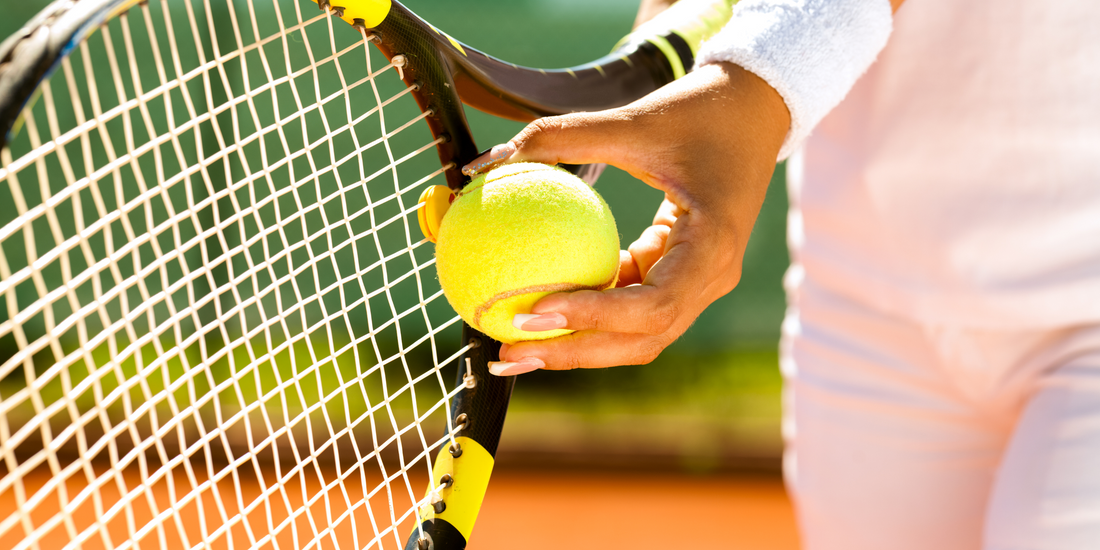
When most people start playing tennis, they focus on the strokes—how to serve, hit a forehand, or master the topspin backhand. But what many beginners overlook is the engine behind those strokes: your body. Tennis is one of the most physically demanding sports. It blends speed, endurance, strength, flexibility, coordination, and mental focus in a constantly changing environment. If your body isn’t prepared, your technique can only take you so far.
That’s where tennis fitness training comes in.
Whether you’re a new player who wants to feel more confident on court, or someone returning to the game after years off, this guide will help you understand the foundations of tennis fitness—and how to start training the right way from day one.
We’ll also include a short video with some simple exercises to get you moving straight away.
Let’s dive in.
1. Start with Tennis Fitness Testing
Before jumping into a training routine, it’s crucial to know where you’re starting from.
Tennis fitness isn’t just about running laps or doing push-ups. It involves multiple components:
- Speed
- Agility
- Power
- Endurance
- Core strength
- Flexibility
- Recovery
That’s why we always recommend starting with Tennis Fitness Testing.
Fitness testing allows you to:
- Identify strengths and weaknesses
- Set clear, measurable goals
- Track progress over time
- Avoid injury by understanding your limitations
- Train smarter—not harder
We’ve developed a specific Tennis Fitness Testing Program you can do at home or on the court. It’s designed for players of all levels and gives you a clear snapshot of where your fitness stands. You’ll discover which areas need work and how to target them effectively.
If you’re serious about improving—no matter your level—testing is your starting line.
2. Build Your Tennis Fitness Foundation: Strength, Flexibility, and Movement
Once you know where you’re at, the next step is building your base. Three areas matter most: strength, flexibility, and movement. Let’s break each one down.
1. Strength
Strength gives your body the stability and control it needs to produce power, stay balanced, and absorb force during matches.
For beginners, the focus should be on bodyweight strength and proper technique.
Think:
- Squats
- Lunges
- Planks
- Upper body band exercises
2. Flexibility
Most tennis injuries stem from tight muscles or restricted movement. Improving your flexibility allows for smoother strokes, faster recovery, and more freedom in your game.
Start with:
- Mobility drills (hip openers, thoracic spine rotations)
- Static stretches (hamstring, quad, shoulder, and hip stretches) after play
It doesn’t take long — 10 minutes a day can make a big difference.
We include flexibility programs in all our online tennis programs for a reason: it’s one of the most neglected areas for beginners, yet one of the most beneficial.
Great tennis players are great movers. Even at the beginner level, working on your footwork and agility gives you a huge edge and will help you improve at a faster rate.
You don’t need a court to improve your movement. Simple drills like the ones in the video below will give you rapid improvement in your game.
3. Be Consistent and Follow a Specific Plan
The biggest mistake beginners make with tennis fitness is inconsistency. They train for a week, skip the next two, and wonder why nothing changes.
They also do unspecific training that often leads to making players slower and causes injuries. If you are new to tennis, you want to get this right, so you are learning and developing your game at a rapid rate!
Here’s the truth: You don’t need to train like a pro to see results—but you do need to train consistently.
Set a schedule that fits your life. Even 3–4 short sessions a week can be enough if you’re following a structured plan.
Here’s what a beginner weekly plan might look like, once they have done their testing:
Day 1 – Strength & Core (30 mins)
Day 2 – Rest
Day 3 – Speed & Agility (30 mins)
Day 4 – Rest
Day 5 – Strength + Core (30 mins)
Day 6 – Speed & Agility (30 mins)
Day 7 – Rest
Start with small goals like improving how you feel after rallies or reducing soreness after matches. As you build momentum, the improvements in your movement, stamina, and confidence will keep you motivated.
Source: Beginner Tennis Fitness Guide: Build a Stronger Game. (n.d.). https://www.tennisfitness.com/blog/tennis-fitness-for-beginners

